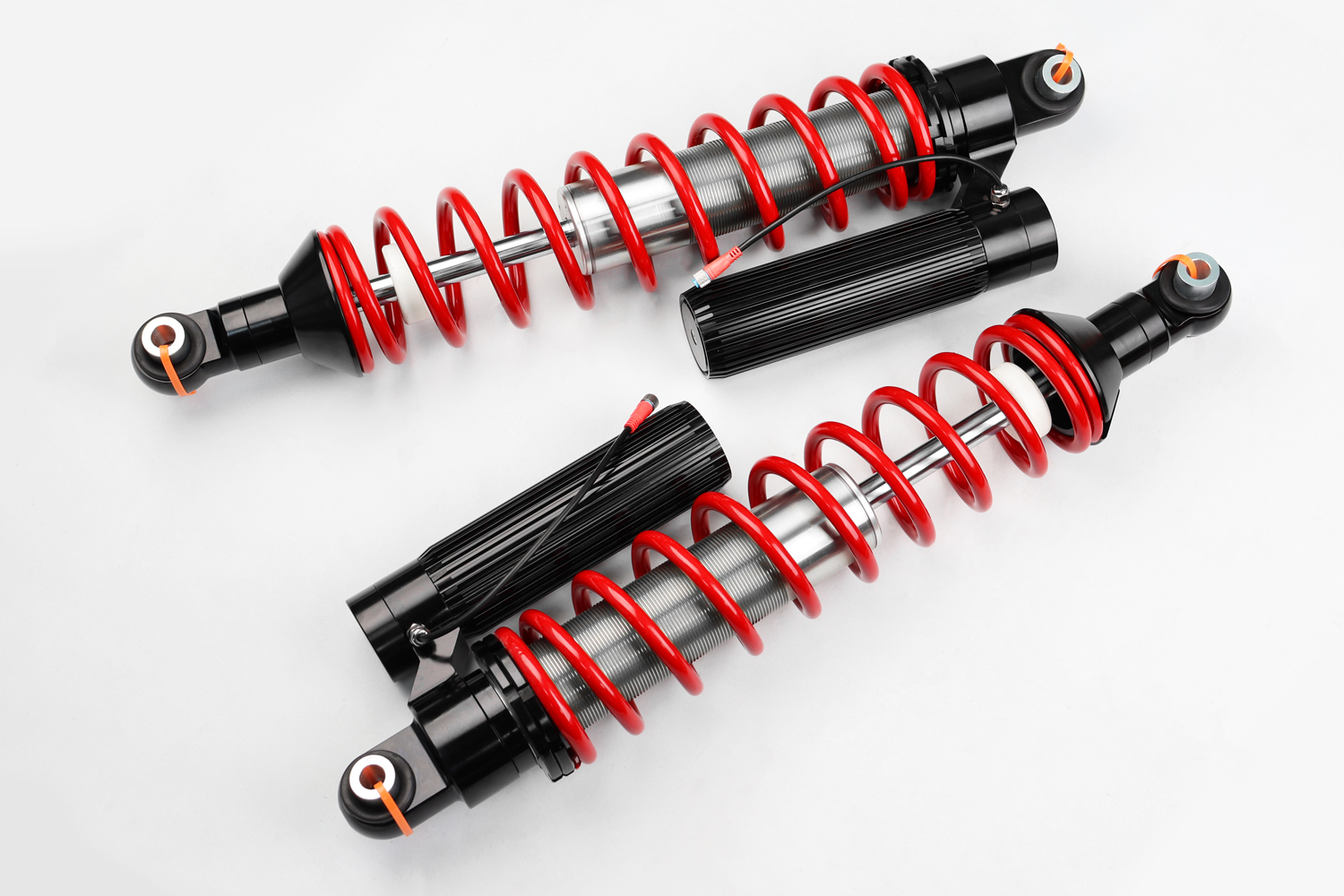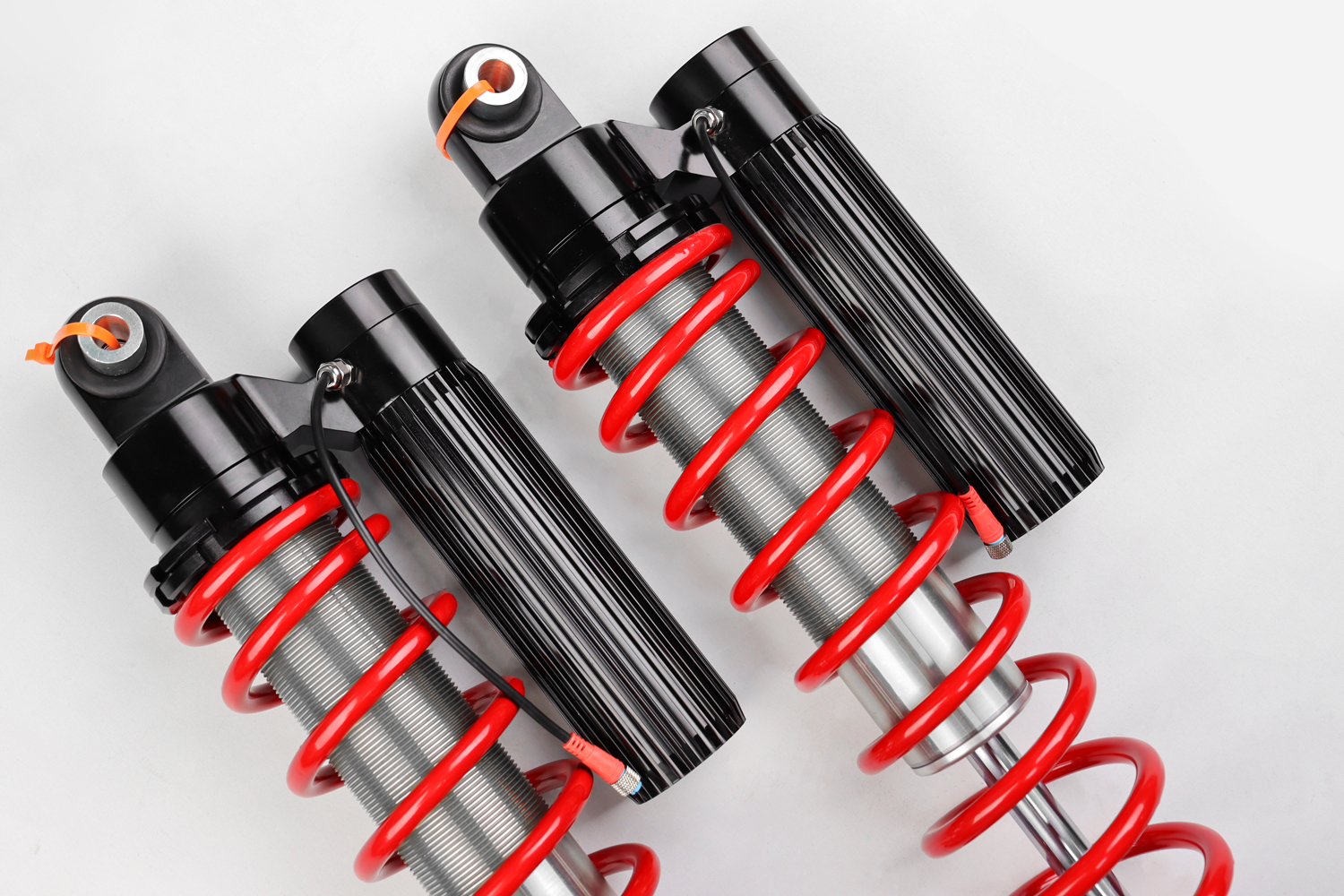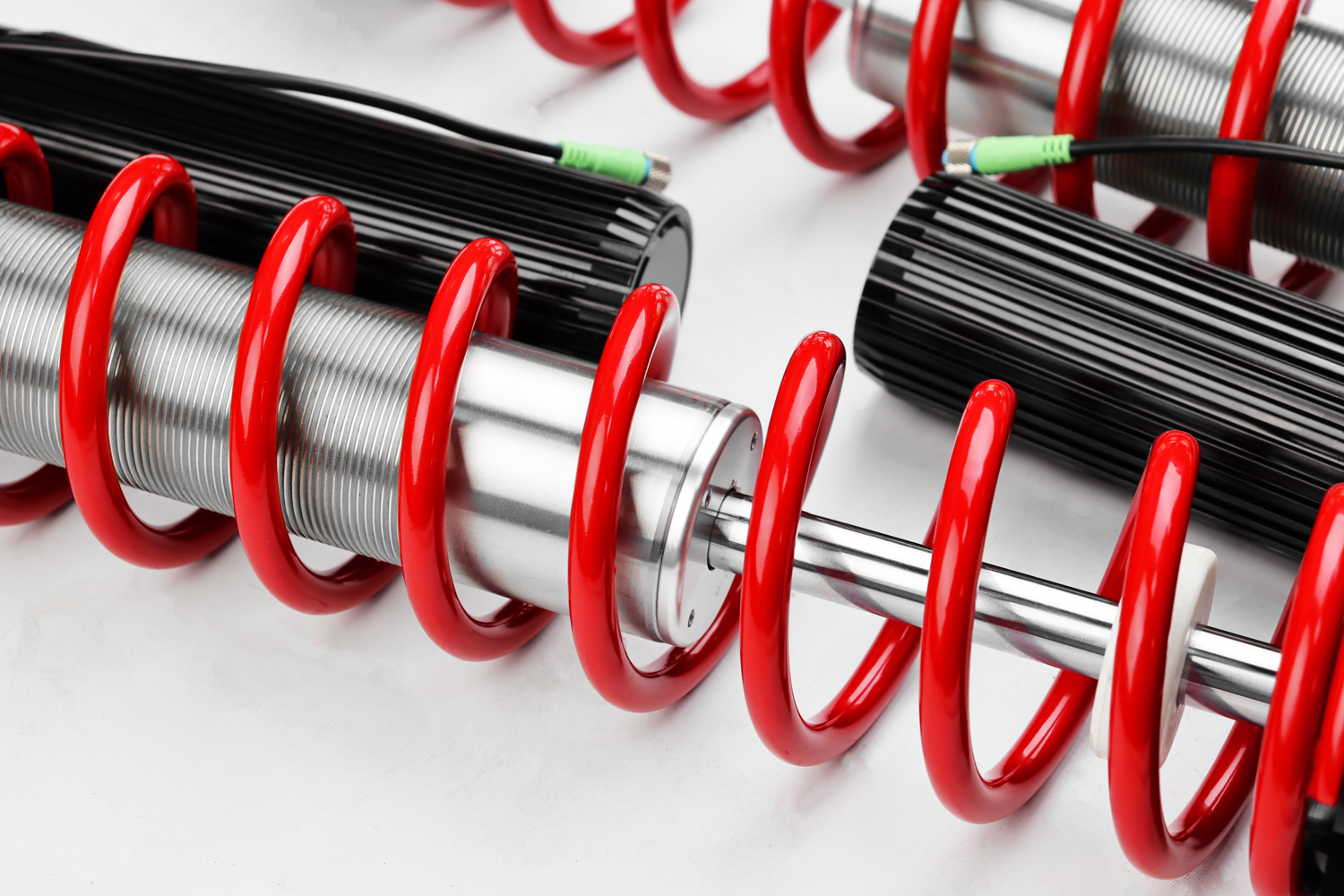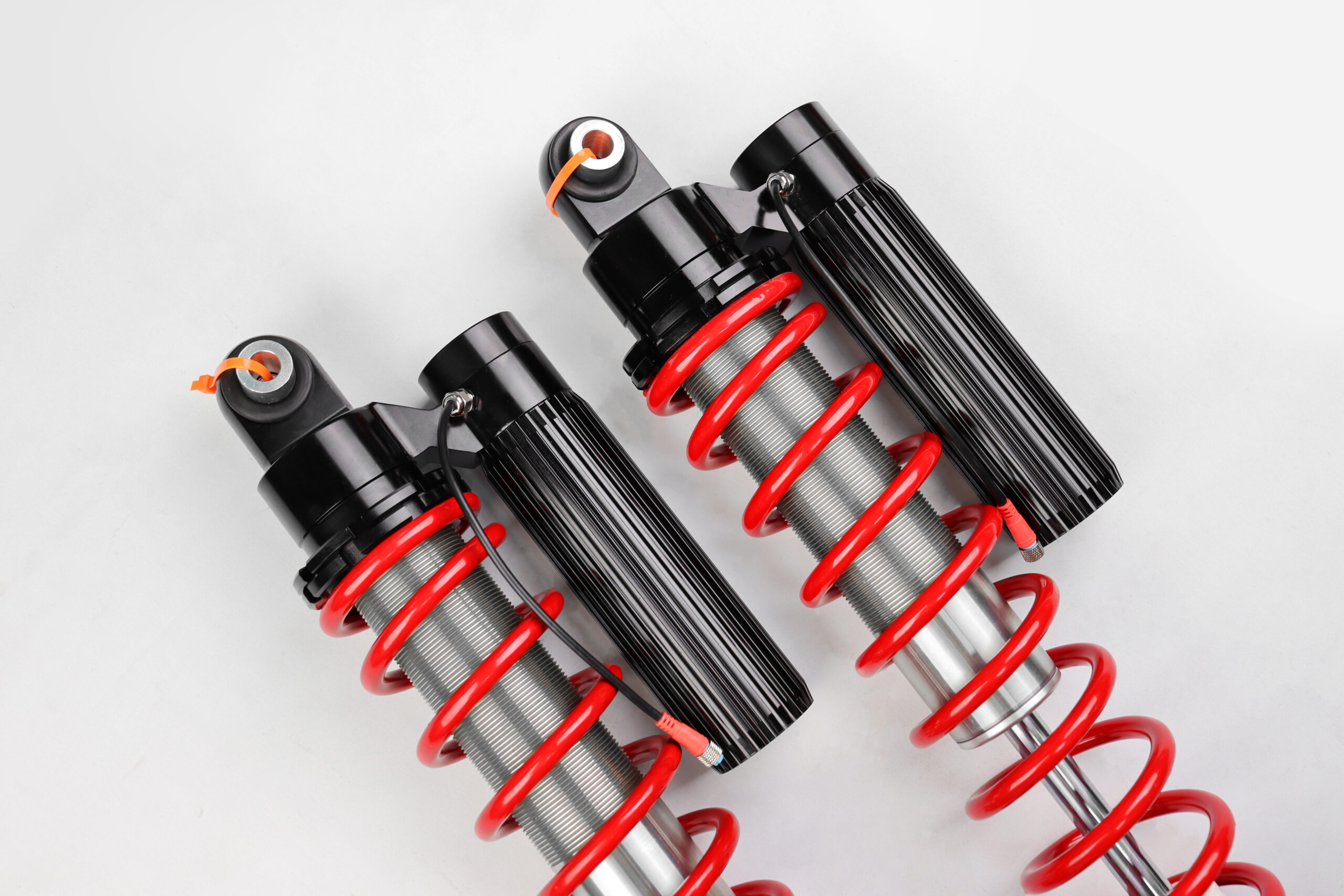Why Use Nitrogen Gas in Shock Absorbers: A Comprehensive Guide for B2B Buyers
août 20, 2025
Partager cet article
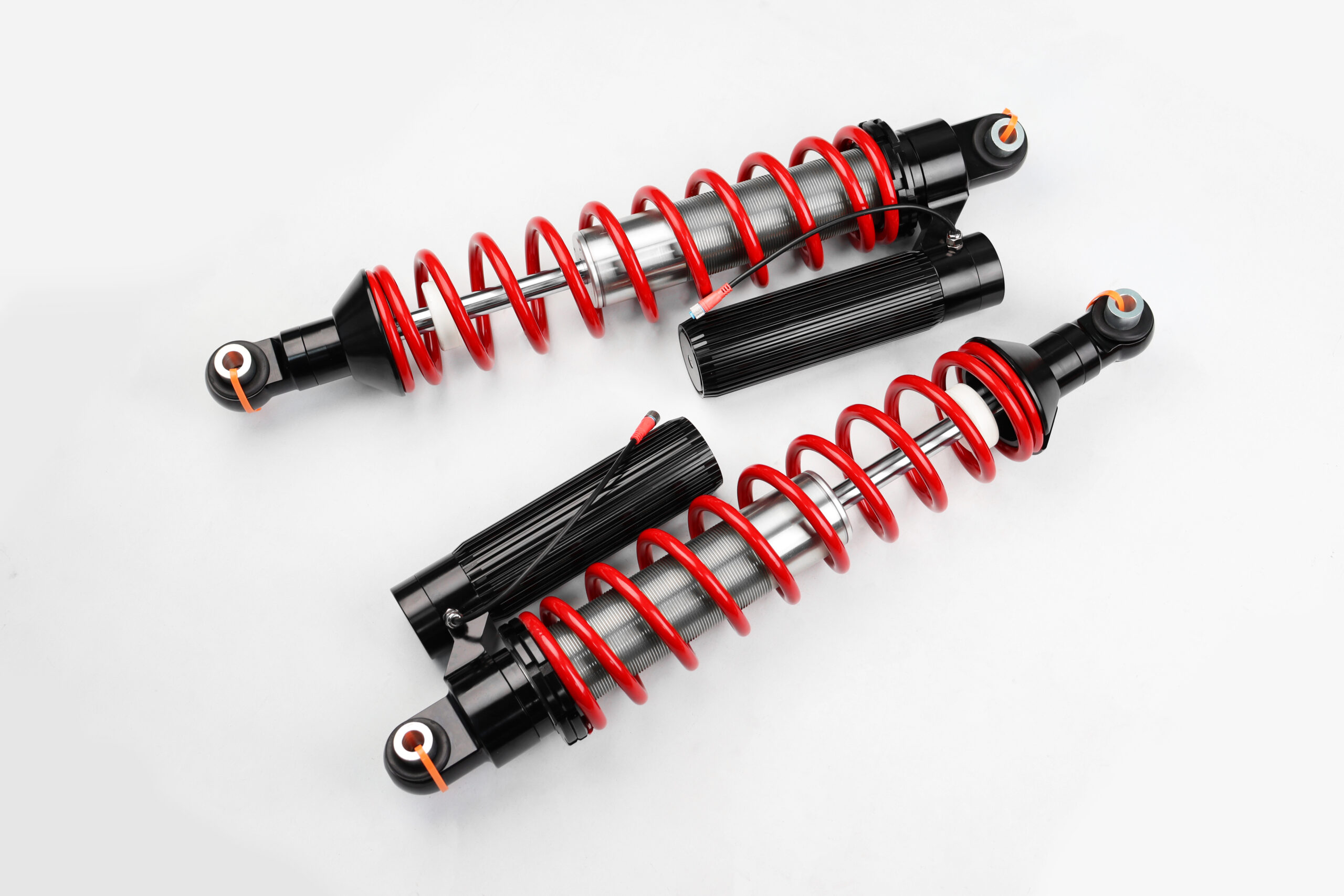
1. What is Nitrogen Gas in Shock Absorbers?
Nitrogen gas in shock absorbers refers to the use of pressurized, inert nitrogen to improve the performance and durability of suspension systems in vehicles. Unlike traditional hydraulique shocks that rely solely on oil, nitrogen-charged shocks include a sealed chamber of nitrogen gas that enhances damping consistency and prevents aeration.
Key Functionality of Nitrogen in Shocks
| Composant | Role of Nitrogen Gas | Bénéfice |
|---|---|---|
| Damping Oil | Prevents foaming and cavitation | Stable performance during high stress |
| Internal Pressure | Maintains consistent pressure inside cylinder | Reduces lag and fade |
| Temperature Regulation | Resists heat buildup | Prolongs shock life |
| Bushing & Seals | Protects from oxidation | Reduces wear and tear |
Why Nitrogen Over Air?
- Air contains oxygen and moisture, which can oxidize internal components.
- Nitrogen is inert and dry, ensuring minimal chemical reactivity.
- It offers predictable pressure behavior under varying temperatures.
Industry B2B Keywords
- Nitrogen gas shock absorbers wholesale
- Inert gas suspension systems for off-road racing
- Nitrogen-filled shock absorber suppliers
- Gas-charged shock solutions for OEMs
- Racing suspension nitrogen technology
2. Applications of Nitrogen-Charged Shock Absorbers in B2B Markets
Nitrogen-charged shock absorbers are not only used in off-road racing but have seen widespread adoption in several commercial and industrial sectors. Their consistent performance and durability make them a preferred choice for high-load and high-speed scenarios.
Key Industries Using Nitrogen Gas Shocks
| Segment de l'industrie | Cas d'utilisation de l'application |
|---|---|
| Équipes de course hors route | Rally, Baja, Dakar, and desert racing vehicles |
| Automotive OEMs | High-performance models and sport trims |
| Fabricants de véhicules récréatifs | Stability and comfort in large-body vehicles |
| Militaire & ; Véhicules tactiques | Terrain adaptability and durability |
| Agricultural Machinery | Load balancing and vibration resistance |
| Fleet & Logistic Companies | Long-distance commercial trucks and trailers |
Avantages pour les acheteurs B2B
- Réduction des coûts de maintenance: Longer lifespan due to stable oil conditions.
- Improved Vehicle Safety: Better road grip and handling.
- Options de réglage personnalisées: Adjustable nitrogen pressure for terrain-specific performance.
- Amélioration de la satisfaction des clients: End users notice improved ride comfort and safety.
🔗 Learn more about how G·SAI supports off-road and performance vehicle industries by visiting our Distributeur.
3. Types of Nitrogen-Filled Shock Absorbers and Their Differences
Understanding the various types of nitrogen gas shock absorbers helps B2B buyers make informed decisions when sourcing for wholesale or OEM use.
Major Types of Nitrogen-Charged Shocks
| Type | Description | Meilleur pour |
|---|---|---|
| Mono-Tube Gas Shocks | Single tube with high-pressure nitrogen separated by a piston | Off-road, racing, heavy loads |
| Amortisseurs à gaz bitubes | Two tubes with low-pressure nitrogen in outer tube | Passenger vehicles, RVs |
| External Reservoir Gas Shocks | Separate reservoir for nitrogen for better heat dissipation | Extreme racing & rock crawling |
| Amortisseurs à gaz réglables | User can adjust damping or nitrogen pressure | Constructions personnalisées, ateliers de tuning |
Principales différences
- Monotube designs offer faster heat dissipation and better consistency.
- Double tube designs are more affordable and better for general road use.
- External reservoir shocks allow extended oil and gas volume, improving endurance in racing conditions.
- Amortisseurs réglables are suitable for dealers and tuners looking to provide tailored solutions.
Buying Considerations for B2B
- Remises sur volume: Available for bulk orders.
- Options de personnalisation: Choose damping force, valve tuning, and nitrogen pressure.
- Intégration OEM: Custom brackets and mounts available for easy fitment.
🔗 Explore G·SAI’s full range of nitrogen gas shock absorbers on our Page produit, designed specifically for B2B and OEM needs.
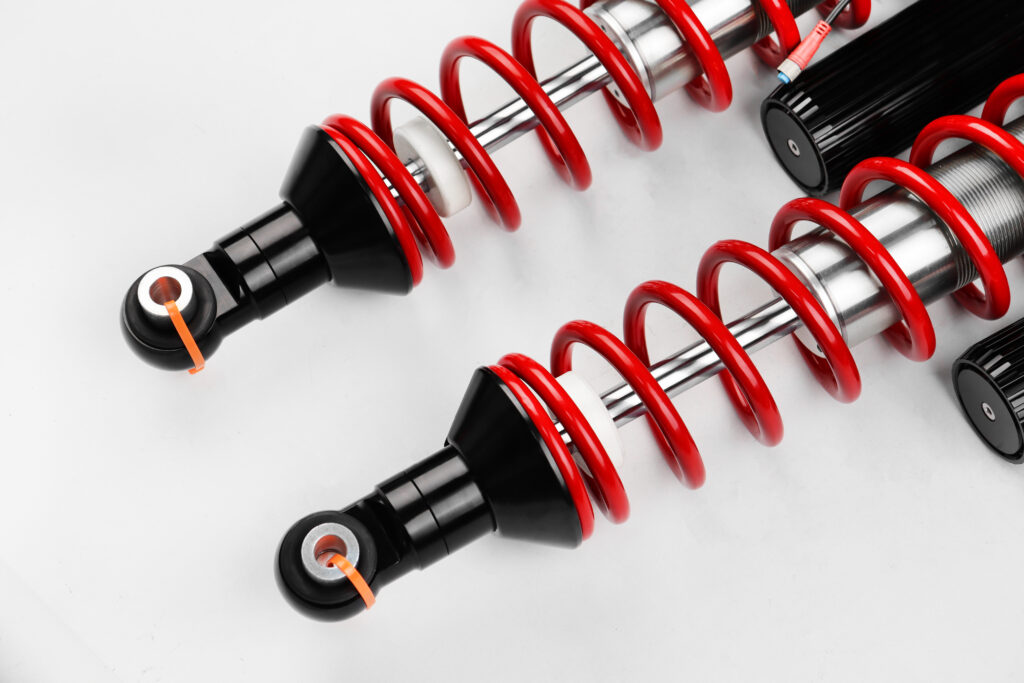
4. Nitrogen vs. Air or Oil-Based Shock Absorbers: Which is Better for Performance?
When choosing shock absorbers for off-road racing, RVs, or commercial vehicle applications, understanding the core differences between nitrogen-charged, air-basedet oil-only shocks is critical. Each type offers unique performance characteristics, but for most B2B applications, nitrogen gas shock absorbers offer a superior combination of durability, control, and reliability.
Comparative Performance Table
| Feature/Metric | Nitrogen Gas Shocks | Oil-Only Shocks | Air Suspensions |
|---|---|---|---|
| Cohérence de l'amortissement | ★★★★★ Stable under heat and pressure | ★★ Can fade due to cavitation | ★★★ Adjustable but less responsive |
| Résistance à la chaleur | ★★★★★ Excellent | ★★★ Moderate | ★★★ Moderate |
| Performances hors route | ★★★★★ Ideal for rugged terrain | ★★ Poor under high-stress conditions | ★★★ Suitable but not rugged-proof |
| Maintenance Frequency | ★★★★ Low | ★★ High | ★★★ Requires compressors, valves |
| Manutention des charges | ★★★★ Great with tuning | ★★★ Average | ★★★★ Adjustable load capacity |
| Cost (B2B Perspective) | Pourquoi l'amortissement multi-étages est-il meilleur pour les applications haute performance | Faible à moyen | High (Initial + Upkeep) |
| Suitability for Racing | ★★★★★ Industry standard | ★★ Rarely used | ★★ Not suitable for competitive racing |
Why Nitrogen Shocks Win for B2B Buyers
- Minimized Cavitation: Oil-foam formation is drastically reduced due to the gas pressure keeping oil stable.
- Consistent Performance: Especially critical during endurance races, long hauls, or rough terrain.
- Durability: Nitrogen reduces internal corrosion and seal wear, extending shock lifespan.
- Lower Long-Term Cost: Fewer replacements and less downtime for commercial fleets.
Si vous êtes un wholesaler or manufacturer supplying vehicles for high-performance or heavy-duty applications, nitrogen gas shocks offer the best long-term ROI.
🔗 Learn how G·SAI’s nitrogen-filled racing shocks outperform others in durability and control on our A propos de nous.
5. How to Assemble or Recharge Nitrogen in Shock Absorbers?
For fleet maintenance teams, racing support crews, or even B2B buyers offering installation services, understanding the proper nitrogen assembly and recharging protocols is essential. While many shock absorbers come pre-charged from the factory, custom builds or tuning needs may require manual nitrogen refilling.
Tools Required for Nitrogen Recharging
| Outil | Description |
|---|---|
| Nitrogen Charging Kit | Includes gauge, valve, and lines |
| High-Pressure Nitrogen Tank | Industrial-grade, clean, dry nitrogen |
| Safety Goggles & Gloves | For protection during high-pressure handling |
| Clé dynamométrique | Ensures correct assembly of valve components |
| Valve Core Tool | Used to remove/install valve in reservoir cap |
Step-by-Step Nitrogen Charging Process
- Check Compatibility: Ensure the shock absorber is designed to support nitrogen charging (e.g., has a Schrader valve or port).
- Inspect Shock Condition: Look for oil leaks, damaged seals, or worn-out bushings before charging.
- Set Up Charging Kit:
- Attach the charging hose to the valve.
- Connect the other end to the nitrogen tank.
- Apply Controlled Pressure:
- Recommended pressures vary (typically 100–300 psi) depending on vehicle weight and performance needs.
- Use manufacturer specifications or expert guidance.
- Monitor Gauge: Ensure no leaks and adjust pressure as needed.
- Seal and Test:
- Tighten all fittings.
- Test shock on the vehicle or suspension rig.
⚠️ Pro Tip: Never use compressed air to fill shocks—it contains moisture and oxygen that can damage internal components and compromise performance.
B2B Advantages of In-House Recharge Services
- Faster Turnaround: Especially useful for race teams and logistics fleets.
- Personnalisation: Tailor nitrogen pressure for terrain or load.
- Value-Added Service: For workshops, dealers, and tuning garages.
La G-SAI offre technical training and custom recharging solutions for B2B partners. Our facility includes a dedicated vehicle modification and training room for OEM and aftermarket support.
🔗 Contact us for technical support or training programs via our Page de contact.
6. Choosing the Right Nitrogen-Charged Shock Absorber for Your Business Needs
The right nitrogen gas shock absorber depends on your industry application, vehicle typeet performance requirements. Whether you’re a racing team, RV manufacturer, or auto parts distributor, tailoring the shock solution ensures better vehicle performance and customer satisfaction.
Critères de sélection clés
| Critères | Description |
|---|---|
| Type de véhicule | Off-road truck, SUV, RV, commercial van, racing buggy, etc. |
| Application Environment | On-road, off-road, desert, mountainous, high-speed track |
| Poids de la charge | Light-duty, mid-weight, or heavy payloads |
| Course de la suspension | Required stroke length and compression/rebound dynamics |
| Force d'amortissement | Adjustable or fixed damping depending on use case |
| Compatibilité | Mounting brackets, eye/bushing size, length configuration |
| Budget Range (B2B) | Low, mid, or high depending on volume and customization |
Recommended Use Cases & Shock Types
| Cas d'utilisation | Type d'amortisseur recommandé | G·SAI Customization Support |
|---|---|---|
| Courses à grande vitesse | Mono-tube gas shock with external res | Yes – Performance-tuned for racing |
| RV or Camper Vans | Twin-tube gas with plush damping | Yes – Comfort-focused for long hauls |
| Tactical or Military Trucks | Mono-tube with nitrogen foam cell | Yes – Rugged terrain and load durability |
| Heavy-duty Logistics Fleet | Gas shocks with reinforced seals | Yes – Long-life, high-mileage tuning |
| Custom 4×4 Builds | Adjustable nitrogen shocks | Yes – Personalized damping and pressure |
Why G·SAI is the Preferred Choice for B2B Buyers
- 17+ Years of Expertise under Chief Engineer Cai Xianyun.
- Solutions sur mesure tailored to exact vehicle specs and terrain demands.
- In-House CNC Machining & Simulation Labs ensure precision and rapid prototyping.
- One-on-One After-Sales Service provides long-term support for enterprise clients.
🔗 Learn more about G·SAI’s precision engineering and B2B services on our Homepage.
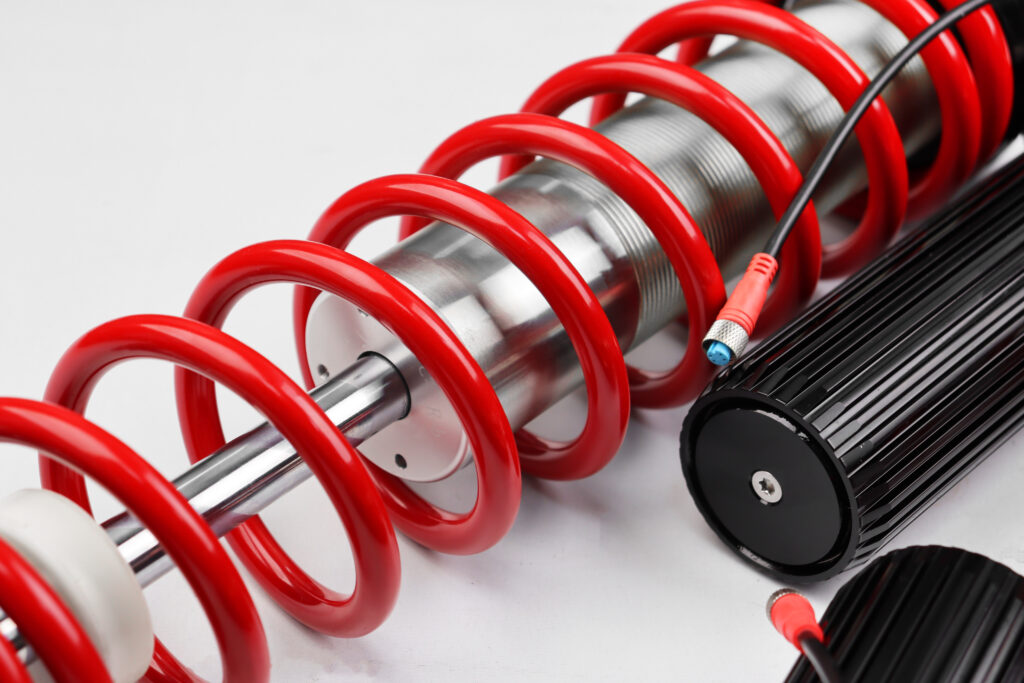
7. Custom Nitrogen Gas Shock Absorber Solutions for OEMs and Racing Teams
In today’s competitive automotive landscape, customization is the key differentiator for OEMs, performance brands, and off-road racing teams. Standard nitrogen-charged shocks may not meet the specific demands of unique applications, which is why custom nitrogen gas shock absorber solutions are in high demand for B2B clients.
Why Choose Custom Nitrogen Shock Absorbers?
- Accord de précision: Tailored damping curves, rebound settings, and gas pressure levels.
- Specialized Fitment: Custom lengths, mounts, and bracket configurations for unique chassis setups.
- Material Upgrades: Use of aerospace-grade aluminum or hardened steel for extreme environments.
- Identité de la marque: Private label or co-branded options to strengthen your product line.
G·SAI: The Customization Expert in Nitrogen Gas Shock Absorbers
G·SAI has become the go-to supplier in China for enterprises requiring des solutions sur mesure pour les amortisseurs. Led by Chief Engineer Cai Xianyun with 17 years of experience in the racing and modification sector, G·SAI delivers custom-built nitrogen gas shock absorbers for:
- Off-road racing buggies
- Modified 4×4 trucks
- Luxury RVs and expedition vehicles
- Military-grade tactical vehicles
- OEM production lines
Customization Options with G·SAI
| Fonctionnalité personnalisée | Options disponibles |
|---|---|
| Tube Design | Mono-tube, Twin-tube, External Reservoir |
| Réglages de l'amortissement | Fixed, Adjustable (compression/rebound) |
| Nitrogen Chamber Design | Foam cell, floating piston, high-pressure sealed |
| Matériau & ; Finition | Aluminum alloy, stainless steel, anodized or powder coated |
| Extrémités de montage | Eye-to-eye, loop, clevis, custom CNC brackets |
| L'image de marque | Laser-etched logos, private label packaging |
B2B Benefits of Custom Orders
- Volume-Based Pricing: Competitive rates for batch orders.
- Faster Time-to-Market: In-house prototyping and testing reduce lead times.
- Protection IP: Secure your custom designs with confidentiality agreements.
- Gestionnaires de compte dédiés: One-on-one engineering and after-sales support.
🔗 Discover how G·SAI can support your custom shock absorber project by visiting our Page de contact.
8. Top 5 Nitrogen Shock Absorber Manufacturers for Bulk Purchasing in 2025
For wholesalers, OEMs, and performance brands, choosing the right nitrogen gas shock absorber manufacturer impacts not only product performance but also brand reputation and customer satisfaction. Below is a curated list of the top 5 global manufacturers dominating the nitrogen-charged suspension market in 2025.
Top Global Manufacturers for Nitrogen Gas Shock Absorbers
| Fabricant | Pays | Specialty Areas | B2B Service Highlights |
|---|---|---|---|
| G-SAI | Chine | Custom off-road, RV, racing shocks | Custom OEM, CNC machining, 1-on-1 support |
| Bilstein | Allemagne | OEM and aftermarket performance shocks | Widely used in European luxury brands |
| Fox Racing Shox | ÉTATS-UNIS | High-end off-road and racing shocks | External reservoir systems, racing pedigree |
| KYB Corporation | Japon | Mass-market twin-tube shocks, OEM supplier | Large-scale OEM production, cost-effective units |
| Amortisseurs King | ÉTATS-UNIS | Desert racing and rock crawling applications | Premium custom builds with tuning services |
Why G·SAI Leads the Chinese Market
- Only Chinese manufacturer on the list offering deep B2B customization
- Advanced simulation lab and CNC production line
- Proven track record in competitive racing events
- Flexible MOQ (Minimum Order Quantities) for startups and mid-size brands
🔗 Learn more about G·SAI’s competitive edge and innovation on our À propos de nous.
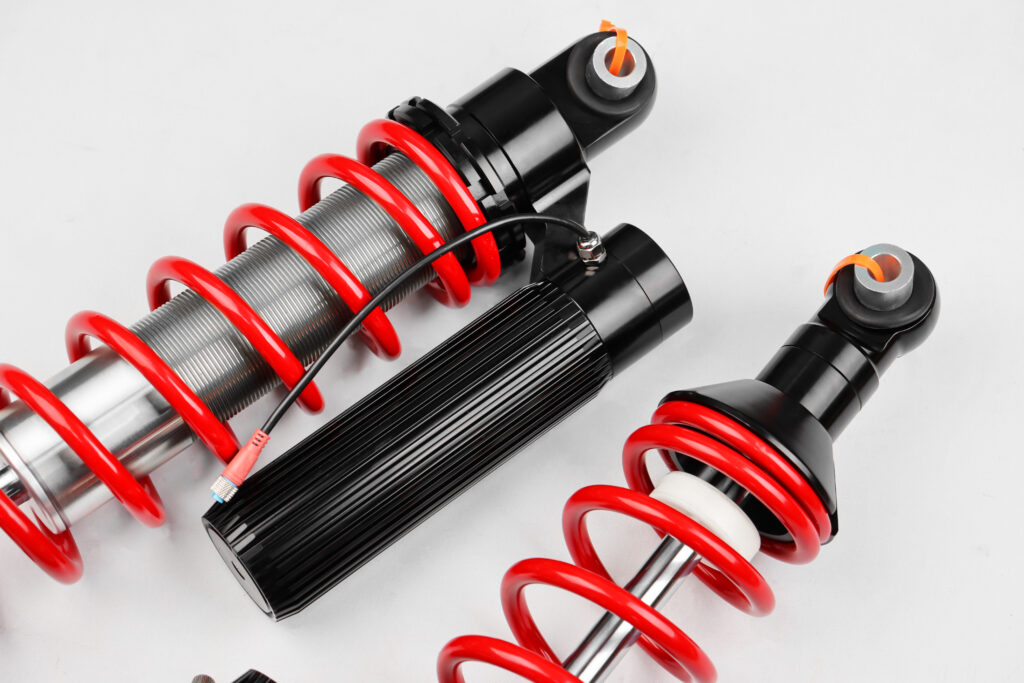
9. FAQs About Nitrogen Gas in Shock Absorbers
Q1: Why is nitrogen gas better than air in shock absorbers?
Réponse: Nitrogen is an inert, dry gas that doesn’t expand or contract as drastically with temperature. It prevents foaming in the shock oil, maintaining consistent damping performance during heavy use or extreme conditions.
Q2: Can I refill nitrogen shocks myself?
Réponse: Yes, with the proper tools and safety equipment (charging hose, pressure gauge, nitrogen tank), shocks can be recharged. However, it’s recommended that B2B clients partner with certified service centers or manufacturers for accurate tuning.
Q3: Do nitrogen shocks work in cold weather?
Réponse: Absolutely. Nitrogen gas maintains stable pressure across a wide range of temperatures, making these shocks ideal for both desert heat and sub-zero conditions.
Q4: What pressure should I use for nitrogen shocks?
Réponse: It depends on the shock type and application. Most off-road and racing shocks operate between 100–300 psi. G·SAI provides specific guidelines for each model based on your use case.
Q5: How long do nitrogen gas shocks last?
Réponse: With proper maintenance, nitrogen-charged shock absorbers can last 2–3 times longer than oil-only shocks, especially in rugged or high-speed environments.
Q6: Does G·SAI offer private label options?
Réponse: Yes, G·SAI offers full private labeling services, including branding, packaging, and product customization for brands looking to expand their suspension product lines.
Q7: Are nitrogen-charged shocks more expensive?
Réponse: While initial costs may be in the gamme moyenne à élevée, the long-term ROI is higher due to reduced replacements, fewer failures, and superior performance.
Q8: Can I install nitrogen shocks on stock vehicles?
Réponse: Yes, but the shock must be matched to the vehicle’s weight, suspension travel, and usage. G·SAI offers consultation to ensure compatibility.
Q9: What’s the MOQ for B2B orders from G·SAI?
Réponse: G·SAI offers flexible MOQs, especially for new brands or niche vehicle builders. Contact their team to discuss project scope and volume requirements.
🔗 Ready to transform your vehicle performance with custom nitrogen-charged shocks? Explore G·SAI’s full product range on our Page produit.
Réflexions finales
Nitrogen gas shock absorbers have redefined performance in both racing and commercial vehicle applications. From increased durability et stable damping à capacités d’ingénierie personnalisées, they offer unmatched value for B2B buyers across industries.
Que vous soyez un équipe de course tout-terrain, OEM, RV builderou marque automobile, investing in amortisseurs chargés à l'azote ensures your products deliver safety, comfort, and performance.
Why Partner with G·SAI?
- 🏆 Industry leader in China for high-performance and custom shock absorbers
- 🧪 In-house R&D, simulation lab, and CNC machining for fast prototyping
- 📦 OEM, ODM, and private labeling services for global brands
- 🧰 One-on-one engineering support and after-sales service
🔗 Start your journey with G·SAI today by visiting our Page de contact to speak with our engineering or sales team directly.
This comprehensive guide is tailored to help B2B buyers understand the advantages of nitrogen-charged shocks and choose the right manufacturer for their needs. For bulk orders, private label solutions, or engineered custom builds, G·SAI is your trusted partner.

